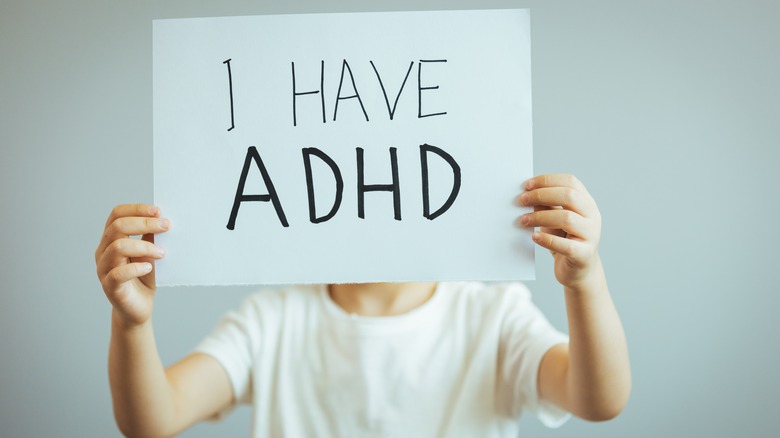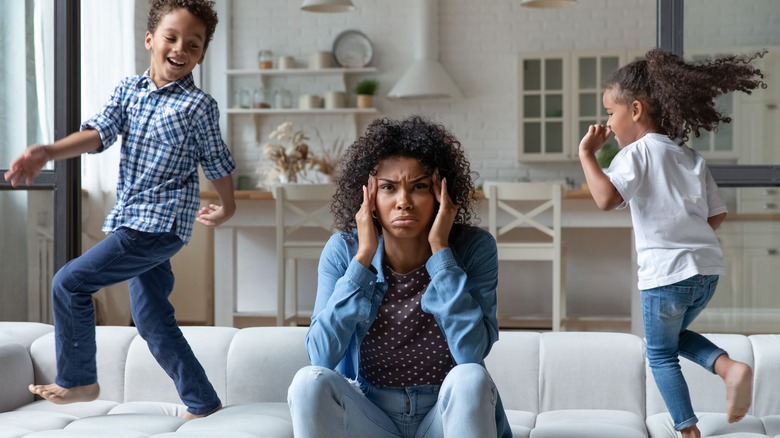How To Recognize And Treat ADHD Triggers
If you have attention-deficit-hyperactivity disorder (ADHD), then you know that the struggle is real. From difficulty concentrating and completing tasks to disrupted sleep and fervent emotions, symptoms of ADHD can be made worse by triggering stimuli, reports Healthline. Learning how to identify and manage these triggers and their effects on your ADHD symptoms can help you thrive, or at least make it through the day without any added stress.
Per the Centers for Disease Control and Prevention (CDC), ADHD is a common neurodevelopmental disorder that usually becomes apparent during childhood and primarily affects children, although some people can continue to experience symptoms of ADHD into adulthood. Symptoms frequently associated with ADHD include being overly active and easily excitable, exhibiting impulsive behaviors, difficulty paying attention, and talking too much. Symptoms can exhibit on top of one another, like feeling an impulse to speak out of turn when the child or adult should be paying attention to something else. Many times, people with ADHD don't realize their symptoms are coming on until they've already blurted out or become excited at an inappropriate time, or they may feel an impulse coming on, but don't know how to redirect or stop it. The onset of symptoms is often caused by a trigger or made worse by specific environments, circumstances, or habits. Being able to recognize when triggers are beginning to appear and knowing how to combat the exacerbation of symptoms can be a helpful lifestyle management tool for people living with ADHD (via Healthline).
Identifying ADHD triggers
Understanding your type of ADHD is the first step in identifying the triggers of your symptoms. According to the CDC, there are three types of ADHD. Symptoms of predominantly inattentive presentation include difficulty remaining organized, completing tasks, following instructions, paying attention to details, and focusing on conversations with others. The predominantly hyperactive-inattentive presentation includes symptoms like frequent fidgeting, difficulty remaining still, speaking excessively or at inappropriate moments, and experiencing impulsiveness that can involve grabbing things, interrupting, or engaging in potentially dangerous activities. Combined presentation is diagnosed when a person exhibits symptoms of both forms of ADHD.
Universal triggers like stress, and lack of sleep can exacerbate all forms of ADHD, making it harder for someone to filter out stimuli that trigger their symptoms, says Healthline. For a person predisposed to being easily distracted or someone susceptible to impulsive behavior, lack of sleep can cause them to be less alert and attuned to oncoming symptoms. Stress can distract someone from their surroundings, which can be difficult if you're already inclined to interrupting others or struggle sitting still. For adults with ADHD, stress is one of the biggest triggers of symptoms. Other common triggers are foods with added sugar, caffeinated beverages, and additives including yellow and red dyes, MSG, and sodium benzoate, which have all been found to increase hyperactivity. Overstimulation from one's environment, especially technology and screen use, as well as concerts, crowded public spaces, rush hour traffic, and places with stimulating sensory output can also be triggers.
Managing ADHD triggers
After identifying your symptoms of ADHD, you can begin to incorporate lifestyle changes to cultivate healthy habits and keep triggers at bay. Healthline reports that both behavioral therapy and counseling can help in the treatment of ADHD. Adults with ADHD often engage in cognitive behavioral therapy (CBT). Working with a professional to determine how to identify and manage your triggers is an excellent way to tailor a personal treatment plan.
Additionally, there are several steps that anyone with ADHD can take to minimize triggers and exacerbated symptoms. WebMD recommends eating a balanced diet and avoiding caffeine. Nutrients like calcium, magnesium, fatty acids, proteins, and vitamin B have been found to decrease symptoms of ADHD (via Healthline). Going to the grocery store with a list is a good way to remain focused on buying nutritious items, as per WebMD. Exercise is an excellent way to reduce hyperactivity and impulsivity, especially if you have either predominantly hyperactive-inattentive presentation or combined presentation ADHD. For any type of ADHD, exercise can be a healthy way to ease stress and boost overall wellbeing, therefore mitigating triggers. When it comes to sleep hygiene, keep your phone and all other sources of blue light out of your bedroom. Since it can be difficult for some people with ADHD to fall or stay asleep, using a weighted blanket can help ease anxiety and calm feelings of being fidgety or overactive. If you have any concerns about your ADHD symptoms, always consult with your healthcare provider.



